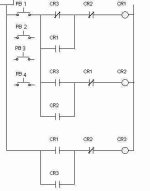I would say that it is a training issue. It is easy to say that just train the home owners to replace the box, let alone change an internal component. What is even worse I have dealt with a lot of contractors, that can effeciently and safely wire a house, but ask them to install a low voltage lighting system or to wire in a PLC, is like the differnece between walking and crawling. Even though it is all the same type of work it is largly based on a "Comfort Zone" that the individual is comfortable with. Much like the general flipping of a switch, maintained switch, regraurdless of the up or down position of the switch a transition means change, when it doesnt work the transistion is attempted again. An operator on a machine typically expects a change when he presses a momentary push button, when it doesn't, he not only presses it again, but it is generally much harder the second time and is still often unsure if the Switch made the transition. I think that home owners are generally more comfortable with with the transition rather than many other alternatives. I have a freind that replaced many of the switches in his home with motion detectors. Years later he says he likes them, saves money and more. The one thing that he hates, and hates really bad, almost to the point of reinstalling regular switches, is that he still finds him self reaching for the light switch either entering or leaving a room and he says it drives him nuts. Comfort Zone most of us were trained to use the switch not a button.






